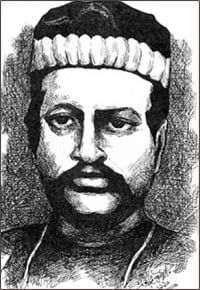Dinabandhu Mitra: Emphasising social reform through theatre

Dinabandhu Mitra
Renowned Bengali dramatist Dinabandhu Mitra (1830-1876) was born at Chouberia in Nadia, and was the son of Kalachand Mitra. His given name was Gandharva Narayan.
Today marks his 133rd death anniversary.
Dinabandhu's education started at a village pathshala. His father arranged a job for him on a zamindar's estate. But the young boy fled to Calcutta (now Kolkata), where he started working in the house of his uncle. Around 1846, he was admitted to a free school. Dinabandhu was a bright student and won a number of scholarships. In 1850, he enrolled at Hindu College and was awarded scholarships for academic excellence. However, he did not appear in his last examination, and, instead, started working as a postmaster in Patna. He served in various posts in the Postal Department in Nadia, Dhaka (then East Bengal) and Orissa. In 1872, he joined the Indian Railway as an inspector.
Dinabandhu started writing while still at college. His poetic style was inspired by Ishwar Chandra Gupta. His poems were able to draw the attention of Calcutta's intellectual circle, but his favourite genre was drama. His work in the postal department had taken him to various parts of the British India, giving him opportunities to study people closely and thereby adding to his ability to unfold the drama of life with a degree of realism unknown at that time.
Among his books of poems is "Suradhuni Kabya" (first part appeared in 1871, second in 1876). His plays include "Neel Darpan" (1860), "Nabin Tapasvini" (1863), "Biye Pagla Buro" (1866), "Sadhabar Ekadashi" (1866), "Lilabati" (1867), "Jamai Barik" (1872) and "Kamale Kamini" (1873). He also wrote a novel titled "Pora Mahehshwar".
Dinabandhu is, however, primarily known for his play on the plight of indigo farmers -- "Neel Darpan". The 'Indigo Revolt' (1858) or 'Neel-bidraho' in Bengali was a mass movement of the indigo farmers against the British planters. It was a significant movement in the history of Bengal.
"Neel Darpan" stormed the social and the literary circle of Bengal. It was published from Dhaka and soon ignited a major argument in the newspapers. His firsthand experience with the indigo cultivators, while on the job as a postmaster in rural Orissa and Bengal, were reflected in the play. Michael Madhusudan Dutt translated the play into English immediately after it was published and Reverend James Long published it. "Neel Darpan" got wide publicity in Europe where it was translated into many other languages. No other Bengali publication at that time got publicity at such large scale. A lawsuit was filed against Rev. Long by July 19, 1861 for libelling the editor of the Englishman and libelling the indigo planters. The court hearing against the indigo planters went on for the next four years.
"Neel Darpan" was emotionally motivating. Apparently during a show the notable educator and social reformer Ishwar Chandra Bidyasagar was so taken in by the realism of the performance of the actor playing the role of the indigo planter that he threw a shoe at him. The actor accepted the shoe as a compliment. Bankimchandra Chattopadhyay compared "Neel Darpan" to "Uncle Tom's Cabin" for its role in raising peoples' awareness.
Compiled by Cultural Correspondent.

 For all latest news, follow The Daily Star's Google News channel.
For all latest news, follow The Daily Star's Google News channel. 



Comments